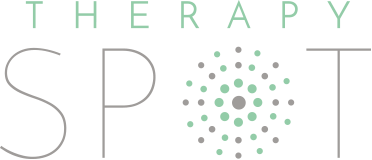Applied Behaviour Analysis (ABA) therapy is a practice in which the psychological aspects of learning are applied to change behaviour. It’s used on both humans and animals and may apply to various settings. It’s often used in education, healthcare, training animals, and even business management and training.
Perhaps its most prominent use, though, is in treating Autism Spectrum Disorder. Although many different techniques are available to help manage autism and its symptoms, ABA is among the most effective therapies.
There are many facets to this type of therapy and it can look a little different for everyone. Read on to learn about ABA therapy and how it can help treat autism.
What is ABA Therapy?
ABA therapy focuses on behaviour; understanding it, changing it, and improving it. It addresses things like communication skills, fine motor skills, social skills, and more. It’s effective on both children and adults and can significantly improve the lives of those diagnosed with ASD as well as those around them.
When beginning ABA therapy, the therapist will start by learning about and observing the behaviour of the patient. They’ll determine which behaviours require change or improvement. From here, they’ll create a tailored treatment plan using the various methods and techniques within the spectrum of ABA therapy.
ABA Therapy Principles
Although many techniques within ABA therapy lead to success, there are a few standard principles that apply at all times. These are the main tenets of the therapy and they’re what help it be so effective.
Positive Reinforcement
This is a crucial element to ABA therapy and changing a behaviour in general. The idea is that when a certain behaviour or action is followed by a “reward,” then you’re more likely to repeat the behaviour. Over time, this creates better habits and a proper change in behaviour, even when no reward is offered.
The “reward” is always different as it must be meaningful and desirable for the individual. For children, common rewards are words of praise and access to things like toys, books, time on the playground, watching a fun video, etc.
This system encourages the individual to continue displaying the desired behaviour, utilizing the skill, or whatever the goal may be.
The ABC’s
The ABC’s stands for “antecedent, behaviour, consequence.” This sequence is crucial in understanding behaviour and how to change and improve it.
- Antecedent. This is the name for an event or action that occurs before a certain behaviour. It can be a spoken command or instruction, or an environmental trigger like a noise. It can also be an internal trigger, like a thought or emotional response.
- Behaviour. The behaviour that immediately follows the antecedent is very telling – it can be anything from a verbal response, an action, or even a lack of response.
- Consequence. Lastly, what follows the behaviour is a consequence. The “consequence” isn’t always negative, it’s simply the result of the behaviour.
An example of this sequence:
- Antecedent: A child can’t find an item that they want.
- Behaviour: The child cries, screams, and throws a fit.
- Consequence: They don’t get the item they wanted in the end.
The goal here would be to encourage the child to calmly communicate their needs and desires. This looks different for every child with ASD. Some may be able to use words, while others may point, use pictures, or something else. When the child engages in this behaviour instead of throwing a tantrum, the “consequence” becomes them getting what they’re asking for, instead.
When a child repeatedly gets the result they want from asking politely, they’ll become more likely to exhibit the desired behaviour regularly. Examining these things helps you understand why a behaviour happens and how different consequences – either good or bad – can affect how likely the behaviour is to recur.
ABA Therapy Techniques
No two treatment plans will look exactly the same. Not only because every person is different but each therapist will have their own style and specialties. Some of the common ABA approaches include:
- Early Start Denver Model. This is a common therapy technique for children with autism that uses play-based approaches to address multiple behaviours and skills in one exercise.
- Pivotal Response Treatment. This method focuses on crucial social skills like sitting quietly, playing nicely, speaking politely, and the like. It’s another play-based model where the child usually leads in the interactions. It’s based on ABA principles but tends to be a little more liberal with rewards; the action or behaviour doesn’t have to be executed perfectly.
- Incidental Training. This is a method that teaches skills and behaviour in real-life settings. It can be done at home and outside of therapy, making it a great method for those with families and/or partners who are present and can participate in their treatment.
- Verbal Behaviour Interventions. This focuses on teaching and encouraging better verbal skills, thus improving communication.
ABA has been around for a while, originating in the 1970s. It was created as a treatment for autism, but it began as a fairly one-size-fits-all approach. Over time, it has evolved significantly as we learned more about ASD and neurodivergence in general. This has only served to better the method as it becomes suitable and effective for a wider range of people!
While ABA therapy is extremely effective with a high success rate, it should still come as part of a wider individualized treatment plan. The best treatment plans for ASD often include speech pathology, occupational therapy, and at-home support.
Experience the Benefits of ABA Therapy
At Therapy Spot, our professionals incorporate many of the techniques used in ABA therapy when treating ASD. We also offer speech therapy along with many other programs including a special social school, group therapy, and more.
We also offer flexible plans and will treat you in our office or at your desired location, if you wish! Please reach out to us today for more information on our many comprehensive programs.




